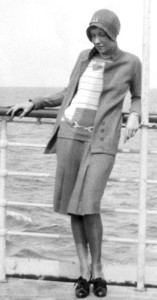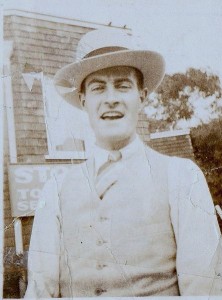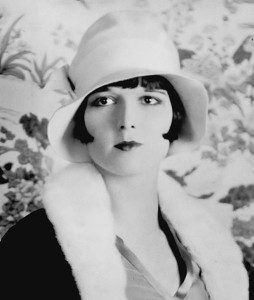This is post number two in my Vintage Apparel Style Guide series. Last month we looked at Fashion of the 1970s after finding old pictures of my mother from the 70s, today we’re going to look at 1920s fashion. Why fashion of the 20s? I recently saw the new Great Gatsby movie and wanted to look more into the fashion of the era.
About the Roaring 1920s
World War I ended and the 1920’s began. Customs and morals relaxed and the stock market was booming. Prohibition made alcohol illegal, but most ignored that, and for the first time there were more Americans living in cities than in the country on farms. There were many Americans who were not comfortable with the new, more racy culture that was dominant during the decade, but for the younger generations in the cities, it was a grand time.
Women’s 20s Fashion
Women were entering the workforce and had earned the right to vote and this had affected their fashion in the 1920s. Trends became more practical, accessible and comparably masculine compared to the conservative clothing and corsets from before. A boyish figure with flattened hips and chests became desired at the time.
The most well know, and memorable, trend that emerged in 20s fashion was “the flapper” look. This dress flattened a women’s bust line instead of accentuating it and was more functional for women. Dresses were low-waisted and full at the hemline which allowed women to do the popular new dances of the time. In 1925 the waistlines disappeared, creating a shift type of dress. Towards the end of the decade we started to see knife leaded skirts with a hemline that rested just below the knee as well as dresses with collars and straight bodices.
Men’s 20s Fashion
For men there were two different periods of fashion on the 1920s. During the entire decade men wore short suit jackets. In the early 20s these jackets had lapels that were narrower and pants, or trousers, were more narrow and straight. Trousers were also designed to be short enough that the gentleman’s socks were showing. Later in the 20s jackets returned to a more normal waist and the lapels became wider. The sleeves also became more loose fitted and lacked a taper. Oxford bags, a wider trouser, also became a trend. Men also started wearing sweaters and knickers, or a short trouser, going with the trend of 1920s fashion becoming less formal.
Hats were also a big part of men’s 20s fashion, though the hat a man wore was influenced bu his class. Upper class men typically wore tops hats and homburg hats. Middle class men wore bowler hats, trilby hats and fedoras and the working class men wore flat caps and newsboys caps. During the summer months, the upper and middle class may where a straw boater hat.
Hair and Makeup
For women, short boyish cuts were popular including the bob cut, shingle bob, and the eton crop. Hair was kept flat and close to the scalp, and very short. Make-up became easier to apply, which caused it to be used more. Make-up was used to make the eyes look larger and younger, lips were painted to accentuate the bow of the upper lip and the depth of the lower lip. Tanning also came into fashion after Coco Channel showed one off after an afternoon on a boat.
Here are some other resources to take peak at if you want to learn more about fashion of the 20s:
Wikipedia Entry: 1920s in Western fashion
1920’s Womens Fashions and the Changing Role of Women



